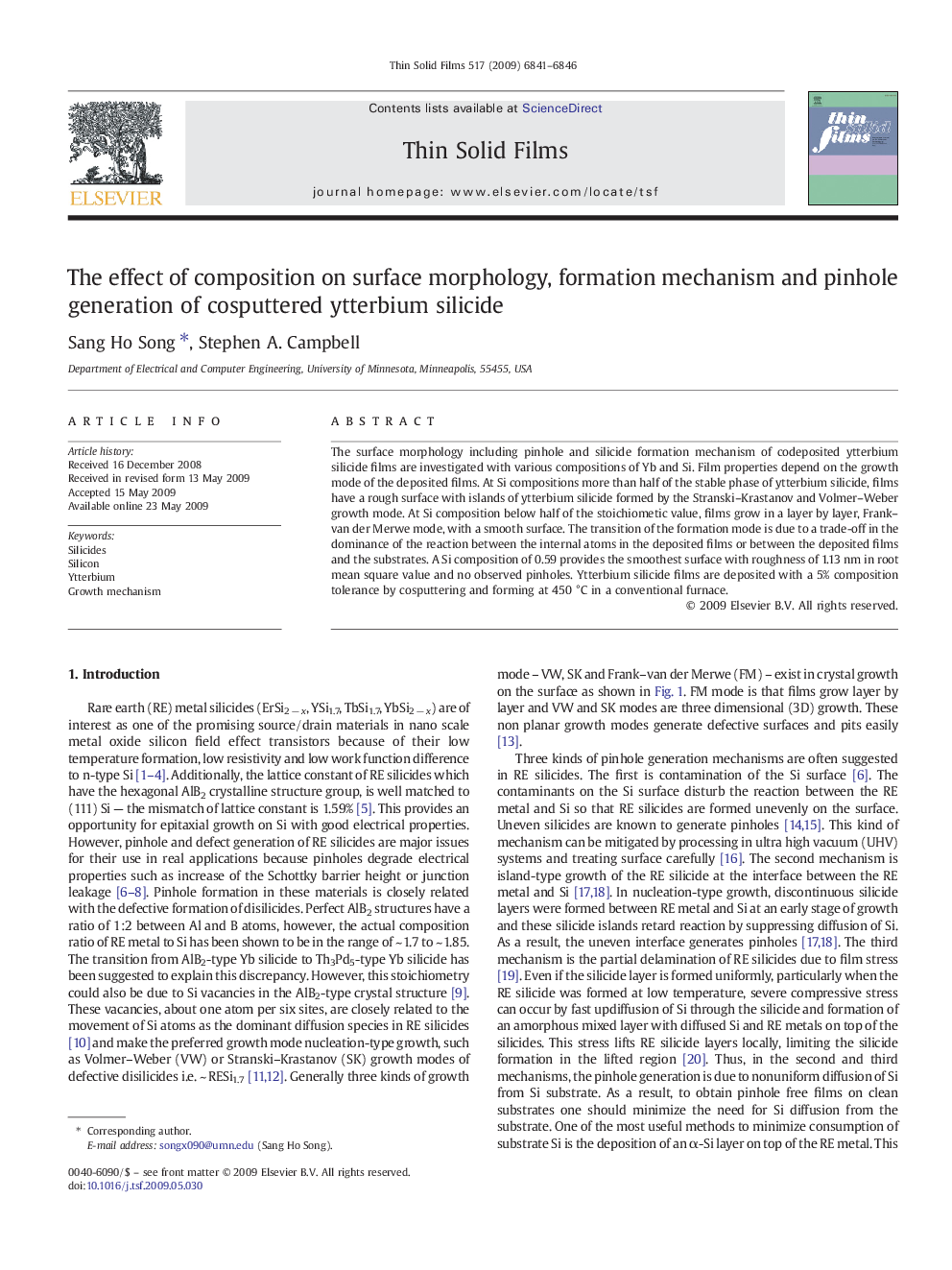| Article ID | Journal | Published Year | Pages | File Type |
|---|---|---|---|---|
| 1672531 | Thin Solid Films | 2009 | 6 Pages |
The surface morphology including pinhole and silicide formation mechanism of codeposited ytterbium silicide films are investigated with various compositions of Yb and Si. Film properties depend on the growth mode of the deposited films. At Si compositions more than half of the stable phase of ytterbium silicide, films have a rough surface with islands of ytterbium silicide formed by the Stranski–Krastanov and Volmer–Weber growth mode. At Si composition below half of the stoichiometic value, films grow in a layer by layer, Frank–van der Merwe mode, with a smooth surface. The transition of the formation mode is due to a trade-off in the dominance of the reaction between the internal atoms in the deposited films or between the deposited films and the substrates. A Si composition of 0.59 provides the smoothest surface with roughness of 1.13 nm in root mean square value and no observed pinholes. Ytterbium silicide films are deposited with a 5% composition tolerance by cosputtering and forming at 450 °C in a conventional furnace.
